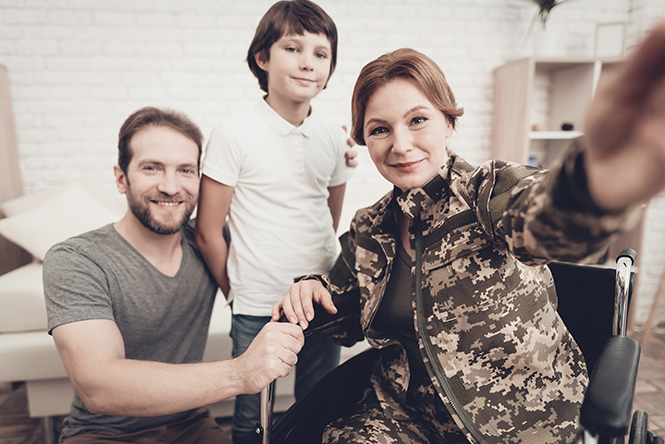The lasting effects and long-term disability after spinal cord injury can be an overwhelming burden to the patients, their families and caregivers, and society as a whole. In the U.S., approximately 294,000 people are living with spinal cord injury (SCI); of the nearly 17,700 new cases every year, 78% occur in men. The SCI incidence is fairly low in military populations, but recently the incidence of SCI in the military (429 per million) increased to nearly eight times that of civilians due to military operations in Iraq and Afghanistan1.
In military populations, after the acute phase of SCI treatment, lifelong care is continued through the Department of Veterans Affairs (VA) whose mission is “to care for him who shall have borne the battle.” The VA Spinal Cord Injuries & Disorders (SCI/D) System of Care is considered the largest single spinal cord injury and disorders (SCI/D) care network in the U.S., providing SCI care and services for approximately 10%–20% of all individuals living with an SCI, serving over 27,000 veterans2. The VA SCI/D System of Care provides inpatient and outpatient SCI/D-related care for veterans to “support, promote, and maintain the health, independence, quality of life, and productivity of individuals with SCI/D throughout their lives.” VA SCI/D centers provide comprehensive medical and surgical care, rehabilitation services, patient and family education, and social, psychological and vocational care with interdisciplinary teams throughout the country to those with spinal cord injury (SCI), multiple sclerosis (MS) and amyotrophic lateral sclerosis (ALS).
Given that women represent a relatively small cohort (21%) among the U.S. population living with SCI/D, it calls into question whether we have a comprehensive understanding of the trajectories for women with SCI/D. Most of the SCI/D research conducted has been in populations which are predominantly male. This potential sex bias may have broad impacts on the accurate diagnosis, treatment and recovery of women with SCI/D. The few limited studies that have examined gender within the civilian SCI/D populations have suggested that women are at risk for poorer outcomes such as depression, unemployment, divorce and single parenthood3,4.
In the veteran population, women represent only 3-5% of the veteran SCI/D cohort5,6. However, many of the statistics detailing the number of SCI/D veteran patients that are women are outdated. There is a small but growing body of literature examining outcomes in the women veterans with TBI which suggests that the experience post-TBI for women is distinct from that of men. One report found that women veterans with SCI had a higher rate of co-morbid medical diagnoses and therefore higher burden of illness.5 Therefore, we are currently undergoing research to examine injury patterns and clinical care engagement in women veterans with SCI/D.
Current efforts are directed towards women veterans with SCI/D with the goal of transferring the lessons to the general population where resources, access and tracking limit such research. Current knowledge suggests that successful support for women with SCI begins during acute rehabilitation, through psychological and mental health support, pain management and social supports to guide women in adapting to their injury. Improving clinical and psychological support for women with SCI/D during rehabilitation is critical to building a foundation for lifelong care which can target and sustain comprehensive healthcare for these women. Improving the engagement in health care for women with SCI/D will translate to optimized consistent and lifelong care.
References
- Spinal Cord Injury Research Program, Congressionally Directed Medical Research Programs. https://cdmrp.army.mil/scirp/default. Accessed July 2, 2021.
- Spinal Cord Injury. https://www.research.va.gov/topics/sci.cfm. Accessed June 23, 2021.
- Wilson CS, Nassar SL, Ottomanelli L, Barnett SD, Njoh E. Gender differences in depression among veterans with spinal cord injury. Rehabil Psychol. 2018;63(2):221-229. doi:10.1037/rep0000221
- Isaksson G, Skär L, Lexell J. Women’s perception of changes in the social network after a spinal cord injury. Disabil Rehabil. 2005;27(17):1013-1021. doi:10.1080/09638280500030431
- Curtin CM, Suarez PA, Ponio LA Di, Frayne SM. Who are the women and men in Veterans Health Administration’s current spinal cord injury population? 2012;49(3):351-360. doi:10.1682/JRRD.2010.11.0220
- Lavela SL, Weaver FM, Smith B, Chen K. Disease Prevalence and Use of Preventive Services: Comparison of Female Veterans in General and Those with Spinal Cord Injuries and Disorders. https://home.liebertpub.com/jwh. 2006;15(3):301-311. doi:10.1089/JWH.2006.15.301








